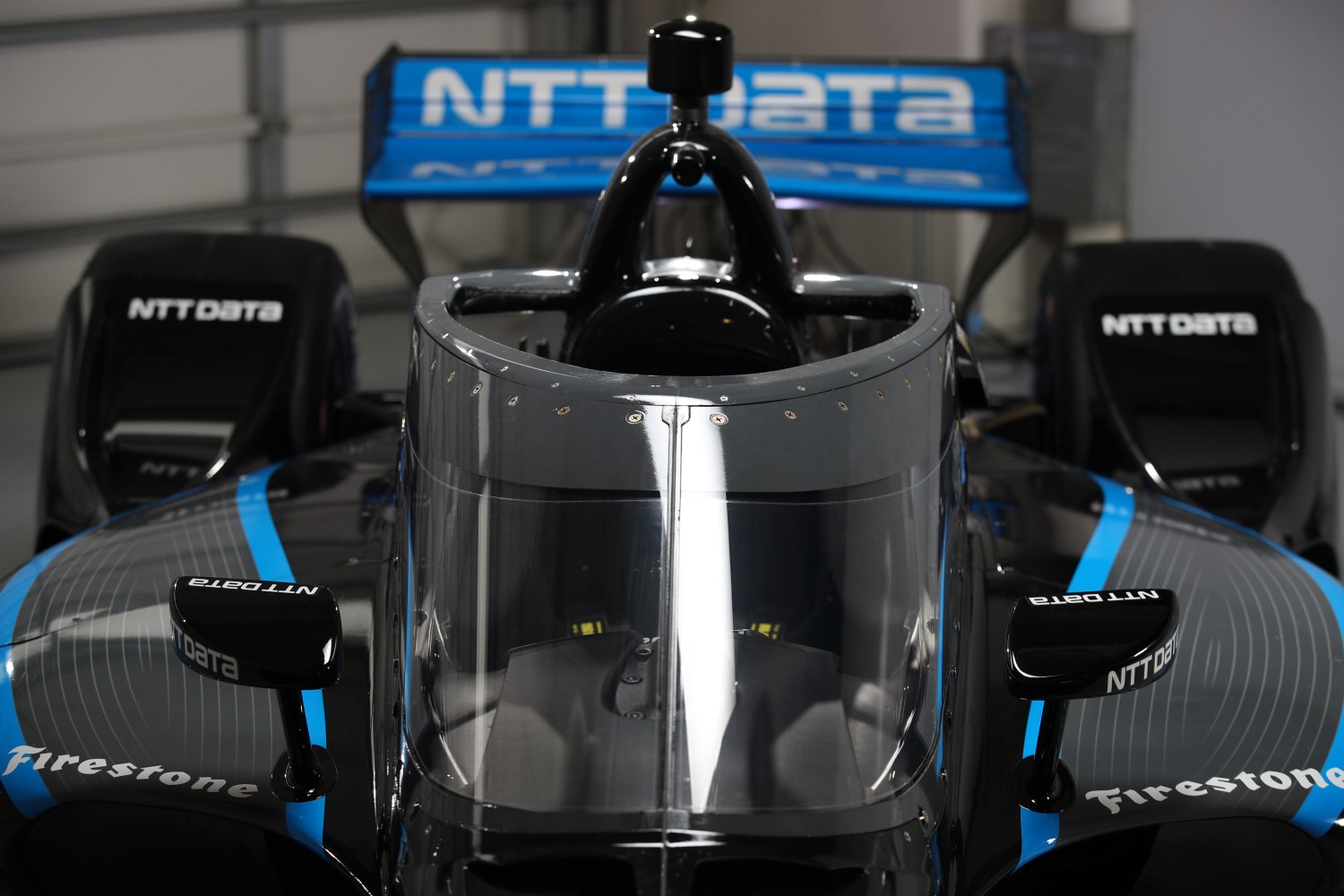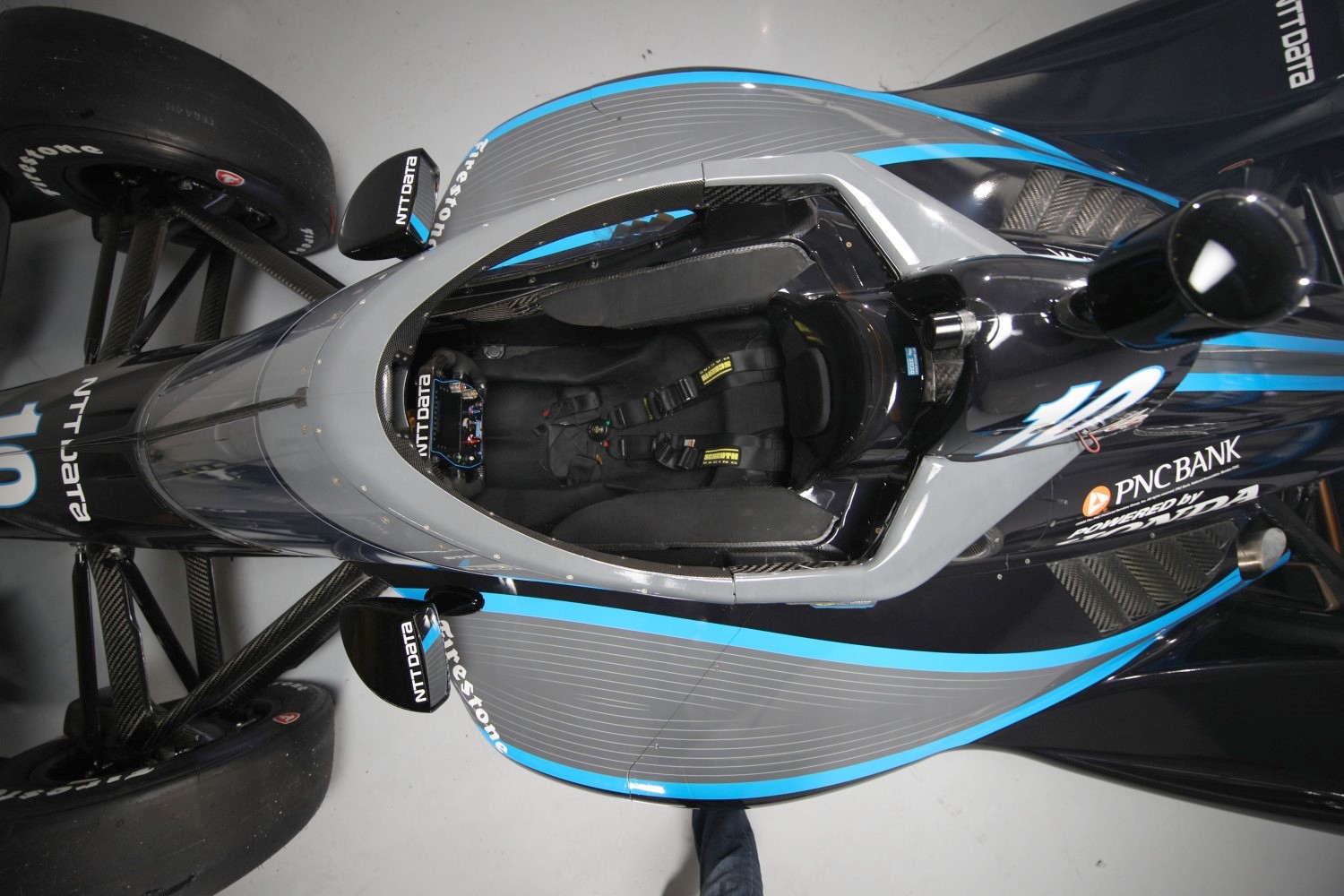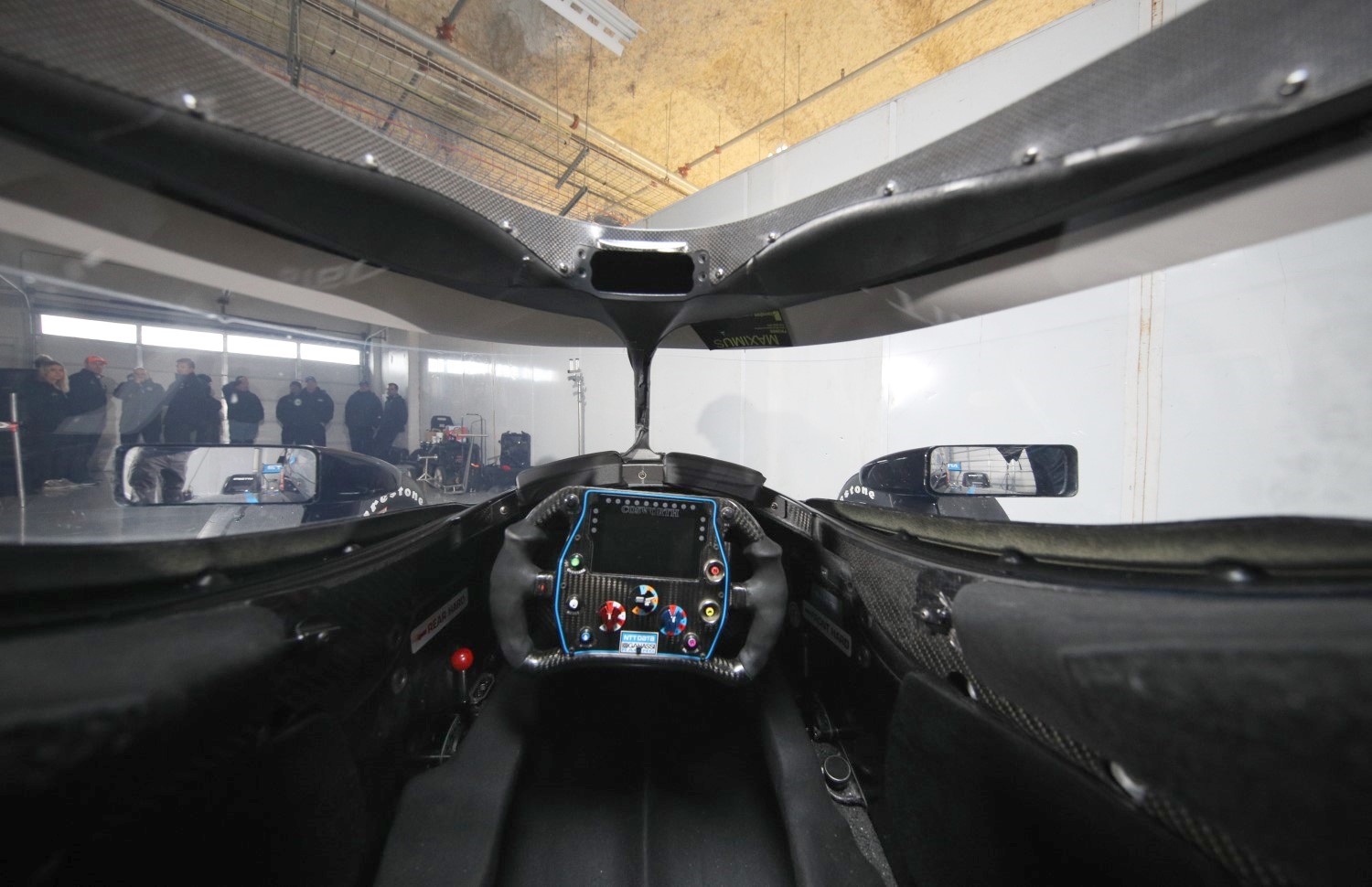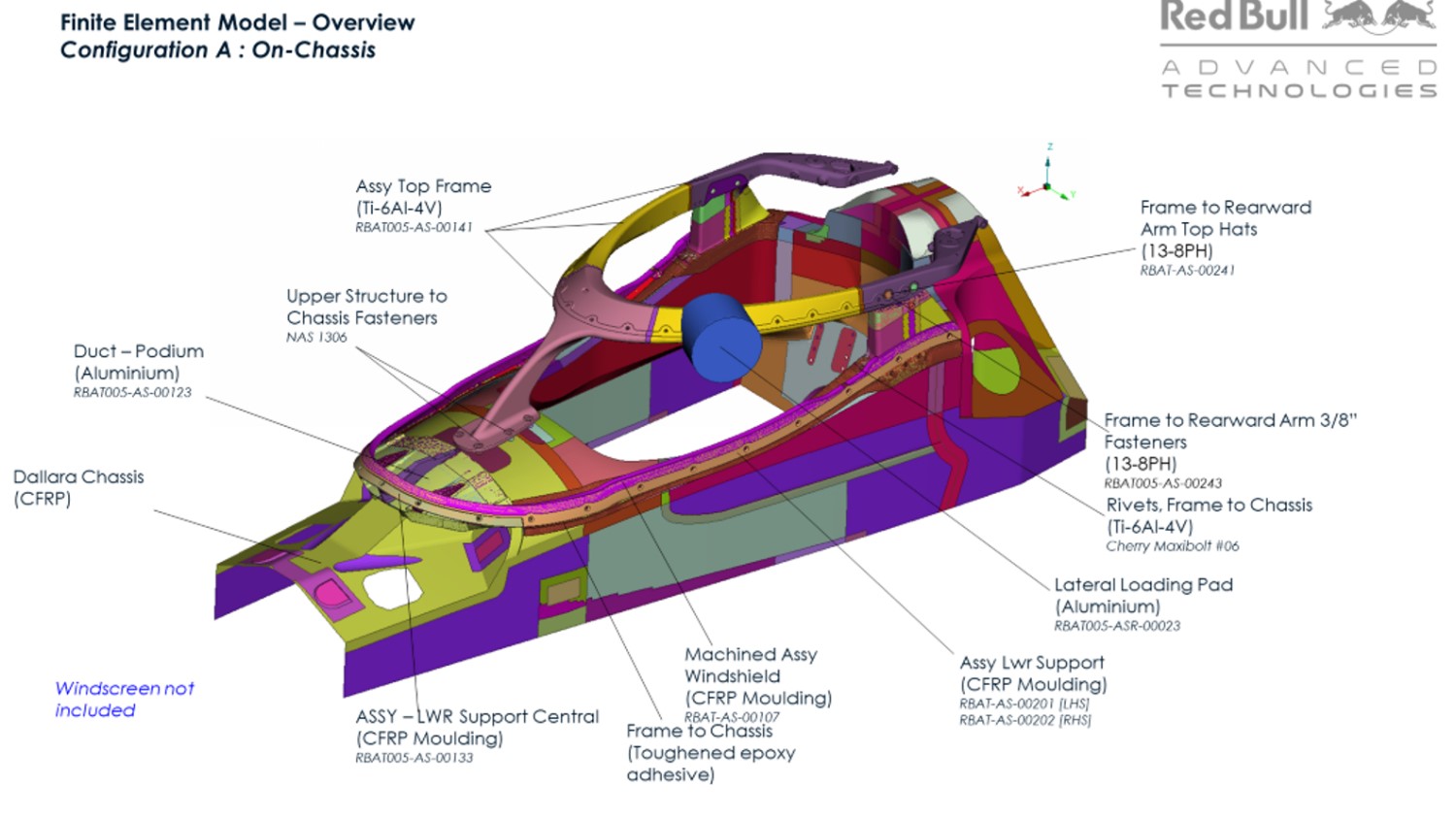Video: 2020 IndyCar Aeroscreen Explained
 |
 |
With the Aeroscreen driver cockpit safety innovation set for its NTT INDYCAR SERIES competition debut March 13-15 at the season-opening Firestone Grand Prix of St. Petersburg, INDYCAR President Jay Frye talks about the project he spearheaded with Red Bull Advanced Technologies.
Overview
The Aeroscreen is a safety innovation for enhanced driver cockpit protection that will make its race debut in the 2020 NTT INDYCAR SERIES season, beginning with the Firestone Grand Prix of St. Petersburg on Sunday, March 15. The safety feature is a ballistic, canopy-like windscreen anchored by titanium framework encompassing the cockpit. INDYCAR has mandated its use by all teams at all track disciplines (ovals, permanent road courses and temporary street circuits).
 |
| Driver's view |
Timeline
INDYCAR partnered with Red Bull Advanced Technologies on the Aeroscreen and in just over four months the safety innovation went from a concept to being tested on track. INDYCAR and RBAT announced the partnership during the 2019 Indianapolis 500 weekend in May, and the Aeroscreen had its first on-track test on October 2. That initial test was held at Indianapolis Motor Speedway with Chip Ganassi Racing’s Scott Dixon and Team Penske’s Will Power. More on-track tests with additional drivers followed at Barber Motorsports Park, Richmond Raceway and Sebring International Raceway over the course of a month to simulate the other type of disciplines the NTT INDYCAR SERIES competes on.
Noteworthy
- The titanium Aeroscreen frame produced by Pankl weighs 27.8 pounds and can withstand 34,000 pounds of force. That is equivalent to 17 tons. The carbon reinforcing the cockpit rim has increased the stiffness of the tub by more than 10 percent.
- The frame is made of five pieces of 3D-printed titanium welded together, then machined. All welds are X-ray inspected and final assembly is measured on 3D coordinate measuring machines.
- The ballistic screen, produced by PPG, weighs 17.3 pounds and can withstand a two-pound object striking it at more than 220 mph.
- The entire Aeroscreen assembly can be fitted or removed on an NTT INDYCAR SERIES car in fewer than 15 minutes.
- The Aeroscreen has a heating element in the middle of the laminate to prevent fogging. It can have up to eight tear-offs on the outside of the screen, and these can be removed during pit stops if the screen gets dirty.
- Air flow to cool the driver comes from vents added under the leading edge of the windscreen, a very high-pressure area. The direction of air flow coming out of these vents can be adjusted by the teams to direct air to different areas of the driver’s torso as preferred.
- For road courses and short ovals, there is an additional air inlet beside the trailing edge of the windscreen on the opposite side of the refueling valve for piping air into the driver’s helmet. Also, there are additional inlets in the nose of the car that can be opened and ducted to cool the driver’s legs.
 |
| Red Bull Finite Element Analysis |
Quotes
“I don’t think any stone has been left unturned, but we will continue to fine tune it. The Aeroscreen is an industry-changing, total driver safety solution." – INDYCAR President Jay Frye.
“Since the first prototypes were developed and demonstrated in 2016, the potential of Aeroscreen to improve the safety for drivers in the event of frontal impacts in the cockpit area of cars has been clear. This new partnership with INDYCAR gives us at Red Bull Advanced Technologies the go-ahead to fully explore that potential, and to deliver a protection system that will help prevent serious injuries and potentially save lives in the U.S.’ premier single-seater series. We’re looking forward to seeing the results race in 2020." – Red Bull Advanced Technologies CEO and Red Bull Team Principal Christian Horner.
[adinserter name="GOOGLE AD"]
